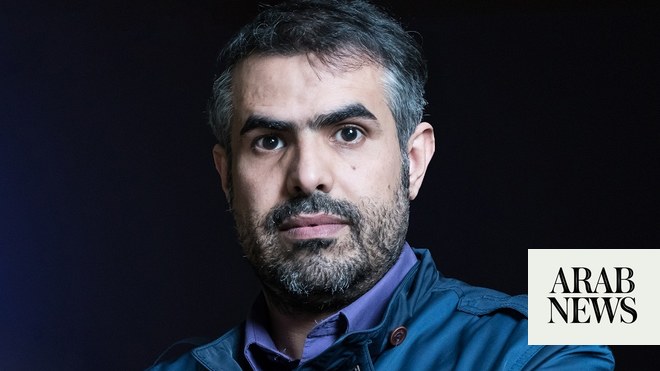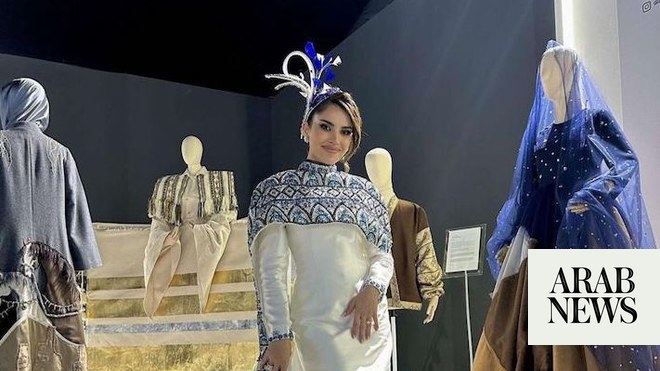
‘Chronicles’ runs July 17 to August 22 and features a selection of work from the Nineties to the present day
DUBAI: On July 17, Christie’s London will inaugurate a mid-career retrospective of one of Saudi Arabia’s most significant conceptual artists, Ahmed Mater. Showcasing photography, works on paper, and installation art, the “Chronicles” exhibition will feature a selection of Mater’s creations dating back to the Nineties, when he first started experimenting with painting.
For the latest updates, follow us on Instagram @arabnews.lifestyle
“Art is a time machine that everyone is looking for. Art can take us to the past and imagine the future, which is a powerful thing,” Mater tells Arab News.
Mater was born in 1979 and worked as a doctor before rising to prominence in the art world with his X-Ray and magnet artworks, providing social commentary on changes happening within the Kingdom.
“I always admired the work of Dr. Ahmed, who is from my generation and my age,” says the exhibition’s curator, Dr. Ridha Moumni, who is the chairman of Middle East and North Africa at Christie’s. “He’s an introspective artist that works on ideas, rather than mediums.
“He’s an artist who can speak very well about his work, but, for me, he’s an artist who produces work that speaks to everyone in a different language,” Moumni continues. “His process of maturation can be seen on many layers — be it social, cultural, religious or political — that are present in his country and, by extension, in the Arab world.”
Here, Mater discusses five pieces from his show, which runs until August 22.
‘The Book of Magnetism’
This is a new artwork that I wanted to introduce in this exhibition. It is a continuation of an earlier magnet artwork I made, on a small scale, of the Ka’aba in Makkah. For me, “The Book of Magnetism” is important because it tells the story of knowledge and how it shapes our life and culture. The oldest invention known to mankind is the book. I presented this book in a way that emanates the holiness of religious books.
‘Desert of Pharan’
This is one of the pieces in my “Desert of Pharan” series, a project related to Makkah, where I put hundreds of found objects, photographs and video art about the city into a single room. This photograph is called “Nature Morte.” The project as a whole tells the story of Islamic Makkah, one of the most visited cities on Earth, as well as showing a study of urban planning in the city. I’m showing how new urban phenomena has changed the city, and how Makkah will influence the future of Islamic cities around the world.
‘Ashab Al-Lal’
This project is based on the idea of the mirage. It’s a project I’m creating for Wadi AlFann in AlUla. In the London exhibition, I’m showing this sculptural maquette of this upcoming artwork. It’s a form of public art. It’s a very environmental piece, connected to the land. I usually work with the ideas of exposure, the body and photography. This piece, using mirrors, reflects our bodies to the sky, like a real mirage. The idea is that you go inside a place in the desert, and when you are in the middle of this artwork, our bodies will reflect for other people to see. There is something theatrical about it too.
‘Lightning Land’
“Lightning Land” is a photograph that has a very nice landscape with lightning happening in the middle. I took this photograph on the way to Dammam in Saudi Arabia. I was actually just taking a picture of the oil refinery and tent that you see in the image. On that afternoon, it was stormy and dusty, and I wanted to this take a picture for a dramatic effect. I didn’t edit anything. I kept it as it was. When the lightning happened, it felt like a good gift. It’s an image that says a lot. The image is poetic evidence of the transformation that is happening in Saudi Arabia.
‘Our Mother House’
This is an old, patterned artwork that the curator Dr. Ridha found in my studio and decided to show in the exhibition. It’s not my painting, but my mother’s. She is a mural painter of ‘Al-qatt al-Asiri’ — painting on the walls of homes, which women do in the southern part of the Kingdom. It’s very symbolic and decorative. Each mural elegantly tells the story of a family and its social background.












